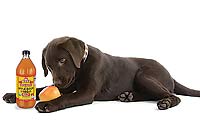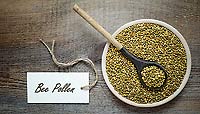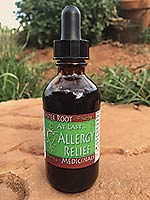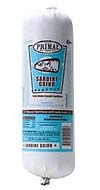When discussing allergies in dogs we quite often talk about food allergies…but environmental allergies are actually a lot more common, with anywhere from 10-40% of dogs suffering from environmental allergies, it has become a big problem.
Allergies happen when your dog’s immune system overreacts to something in their environment, known as a “trigger.” That trigger could be something like pollen, dust, mold or other substances in the air. When allergens enter the body, the immune system releases the histamines to kill them. Unfortunately, these histamines also cause redness and inflammation, itching and irritation.
Environmental allergies in dogs are usually seasonal. Dogs may get very itchy in the spring and fall, with fewer symptoms during winter or summer months. Your dog will usually start to display symptoms between 1 and 3 years old. Common symptoms of allergies in dogs include itching and scratching, hives, ear infections, hair loss and chewing or licking paws.
Some say that the best way to protect your dog is to stay away from the source of the irritation. And sure, that makes sense. But often, this isn’t doable. After all, if your dog is allergic to tree pollen, can you avoid going outside for weeks on end? Others may suggest a steroid or anti-allergy drug like Atopica or Apoquel. These drugs work by suppressing part of your dog’s immune response. This can damage your dog’s immune system, leaving it open to attack, so take careful consideration and consult with your veterinarian when choosing an approach for treating your dog’s environmental allergies.
So, if you can’t remove the allergen and you want to stay away from conventional allergy drugs, how can you ease your dog’s suffering? Here are a few natural solutions that can help.
Bovine Collostrum is produced by cows in the mother’s first milk, immediately after giving birth. Bovine collostrum can help boost your dog’s immunity to common allergens.
To give colostrum for dog allergies, you can use either a powder or a capsule. The dosing is 1/3 teaspoon of colostrum per 25 pounds of body weight.
 Raw, Organic Apple Cider Vinegar can relieve allergy itches. It also helps get rid of the offending allergens. Raw, Organic Apple Cider Vinegar can relieve allergy itches. It also helps get rid of the offending allergens.
One of the most common effects of environmental allergies in dogs is itchy feet. This is usually because of the constant exposure to allergens. Try a foot bath to help.
Mix two parts water and one part apple cider vinegar in a tub or bucket
Soak your dog’s paws for up to 5 minutes each
Don’t rinse, but dry their paws well after soaking
If their skin is itchy, you can also use an apple cider vinegar rinse for their whole body. After bathing your dog with a natural shampoo, rinse them all over with the ACV mixture and pat dry. The rinse contains.
½ cup apple cider vinegar
½ cooled green tea
1 cup filtered water
Bee Pollen is a mix of the pollen collected by bees and enzymes from the bees themselves. It can help manage environmental allergies in dogs. Why? When bees gather pollen, they’re not picky. They go to all kinds of different flowers before heading back to the hive. This means chances are good that the bees are collecting pollen that makes your dog itch. Giving your dog a small dose of the pollen they are allergic to helps desensitize them to the pollens.
Make sure the pollen comes from local bees so that it contains allergens from your area. If you use bee pollen from somewhere else it may not contain any of the allergens that cause your dog’s symptoms. Start with a low dose. Give one granule the first day, mixed in their food. Watch for any response, and if there isn’t one, give two the next day. Increase the amount over several weeks to a dose of 1 tsp per 30 pounds of body weight per day.
 Herbs that contain anti-allergy properties can be used in the treatment of environmental allergies. The histamine content in nettles can protect the body from an attack of allergens. You can dry the herbs or make nettle leaf tea. You can also sauté fresh nettles in a pan with coconut oil until tender and add to your dog’s food. Herbs that contain anti-allergy properties can be used in the treatment of environmental allergies. The histamine content in nettles can protect the body from an attack of allergens. You can dry the herbs or make nettle leaf tea. You can also sauté fresh nettles in a pan with coconut oil until tender and add to your dog’s food.
If you use a tinctur, give 1 drop for every 25 pounds, two to three times per day. Make a tea using 1oz of herb in a quart of filtered water. Boil the water, add the herbs, then cover it and let it steep for 30 minutes. Give 1 tablespoon of the cooled tea for every 25 pounds divided for morning and evenings with food. For topical relief, make a compress. Put tincture or tea on a clean cotton cloth and cover the affected area.
Astragalus helps boost the immune system and relieve allergy symptoms. To give it to your dog, use powder or capsules, and give 100 mg per 10 pounds of your dog’s weight per day. You can also use a tincture and drop some right into your dog’s food. 
The Moab Barkery carries herbal tinctures from Earth Animal and locally produced Sister Root Medicinals that are made specifically for treating allergies.
Research shows Omega-3 fatty acids, especially EPA and DHA found in cold water oily fish like mackerel and sardines, help regulate the inflammatory response that causes allergies. Primal Pet Foods produce a raw frozen sardine grind that can be fed as a supplement to your dog’s diet. When choosing oily fish to feed, whole frozen or fresh fish is best, versus oil derived from the fish, or fish that has been preserved with salt.
When your dog’s body encounters an allergen, it releases histamine. Histamine contributes to inflammation, redness and irritation. Quercetin, a bioflavonoid contains antihistamine compounds that can stop this production. Research shows that quercetin can actually turn off histamine production. It can also stop the production of inflammatory molecules and prevent itching.
Some fruit and vegetables containing quercetin like apples, broccoli, bananas and parsley can be added to your dog’s diet or you can also give a quercetin supplement. Buy a quercetin supplement for humans. Assume the dosing recommendation is for a 150 pound human and adjust for your dog’s weight. Caution: Don’t use quercetin supplements long-term. Only give it for as long as is necessary. Do not give quercetin to dogs with kidney disease.
Some other things that you can do to deal with environmental allergies are feed a fresh, raw diet to boost gut health and improve your dog’s natural immunity. Change your furnace filter often so fewer allergens are in the air. When you vacuum, let your dog hang out in a different room. Vacuuming can stir up those allergens and cause the allergies to spike. Give them a good wipe down with a damp cloth or towel. Sure, it sounds simple, but it helps to remove the offending allergens. Replace your chemical cleaning products with more natural options. This does double duty: it protects your dog from the harmful ingredients in the cleaners. And it can prevent the allergies that may come from exposure to them.
|